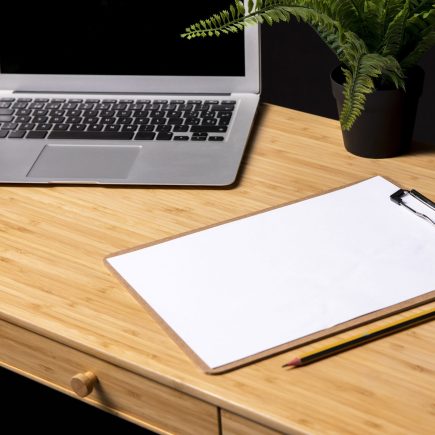Building or upgrading a greenhouse can be an exciting project, but the roof design is crucial for ensuring a thriving plant environment. Whether you’re a hobbyist or managing a commercial greenhouse, the roof is a key element that impacts light transmission, heat retention, and weather resistance. If you’re on a budget, you don’t have to sacrifice quality.
Key Considerations for Choosing a Greenhouse Roof Design
Before we dive into the roof options, it’s important to understand the key factors that will influence your decision. Here are some essential considerations when selecting the perfect roof for your greenhouse:
Climate Suitability: Choose a roof that can handle your region’s temperature, snow, wind, and sun exposure.
Light Transmission: Match the roof material to your plants’ light needs full sun or filtered.
Durability: Pick weather-resistant materials that require minimal upkeep.
Cost-Effectiveness: Find a balance between budget and long-term performance.
1. Flat Roof

Features:
A flat roof is one of the simplest and most affordable greenhouse roof designs. This design involves a horizontal roof with little or no slope, making it easy and inexpensive to build.
Functionalities:
Flat roofs are often used in smaller greenhouses or lean-to greenhouses attached to an existing structure. They maximize headroom inside and provide an easy-to-install solution.
Considerations:
- Flat roofs can lead to water pooling, which can cause structural strain and damage. Regular maintenance and cleaning are required to avoid this issue.
- Best suited for regions with stable weather conditions, minimal snowfall, and light rain.
- Ideal for climates that don’t require significant insulation.
2. A-Frame or Gable Roof
Features:
The A-frame or gable roof design is a classic triangular shape with two sloping sides that meet at a peak. This is one of the most common roof designs for greenhouses due to its efficiency and functionality.
Functionalities:
- The sloping design ensures excellent water and snow runoff, making it ideal for areas with significant rainfall or snowfall.
- The angle of the roof allows for maximum light exposure, even in low-light seasons.
- Provides ample headroom and space for vertical plant growth.
Considerations:
- Requires more materials than a flat roof, which can increase the initial cost.
- The slope angle must be optimized to ensure proper water and snow runoff, which may increase the height of the structure
3. Quonset or Hoop Roof
Features:
Quonset roofs, also known as hoop houses, are simple, curved structures made from flexible materials like polyethylene or polycarbonate, stretched over a metal frame.
Functionalities:
- Quonset roofs are lightweight, cost-effective, and quick to assemble.
- The arch design allows for efficient snow and rain runoff, making it suitable for regions with moderate rainfall.
- Provides good ventilation due to the arch shape, which allows airflow inside.
Considerations:
- Limited headspace at the edges may not be ideal for taller plants.
- Best for temporary or seasonal greenhouses or areas with mild weather conditions.

Tip: The Outsunny 20x10x7ft Heavy Duty Tunnel Walk-in Greenhouse with a Quonset-style roof is a great option for larger spaces. It offers ample space for plant growth, effective weather protection, and affordable pricing.
4. Gothic Arch Roof

Features:
The Gothic arch roof is a variation of the hoop roof, with a pointed peak and symmetrical curved rafters.
Functionalities:
- The pointed shape allows snow to slide off more easily, making it ideal for areas that experience heavy snowfall.
- The design enhances wind resistance, making it suitable for regions with strong winds.
- Provides more internal vertical space for growing plants.
Considerations:
- More complex and expensive to build than simpler roof designs.
- Ideal for climates with extreme weather conditions, such as heavy snow or high winds.

Tip: If you’re looking for an affordable greenhouse that requires minimal maintenance, the Walk-in Garden Greenhouse Polycarbonate Panels is a great option. It’s designed to be simple to install and provides adequate light transmission and insulation at an affordable price.
5. Shed Roof

Features:
A shed roof, also known as a lean-to roof, is a single-pitched roof that slopes in one direction, creating a simple yet effective structure.
Functionalities:
- Ideal for small greenhouses or those attached to existing structures, such as a wall or fence.
- The steep slope helps with water and snow runoff, and the design maximizes vertical space for growing plants.
- Easy and inexpensive to build.
Considerations:
- May not be suitable for areas with high winds or extreme weather conditions.
- Best for smaller greenhouses or those with limited space.
6. Sawtooth Roof

Features:
The sawtooth roof design is characterized by a series of angled panels that resemble the teeth of a saw. The panels are often glazed with materials like polycarbonate to allow sunlight to enter.
Functionalities:
- Optimizes light distribution across a large greenhouse area.
- The design allows for natural ventilation, helping to regulate temperature and humidity.
- Perfect for large commercial greenhouses in warmer climates.
Considerations:
- More expensive and complex to construct than simpler roof designs.
- Requires additional materials for proper insulation and ventilation.
7. Domed Roof

Features:
The domed roof, also known as a geodesic dome, is a spherical structure made from interconnected triangles.
Functionalities:
- Provides uniform light distribution from all angles.
- Excellent at regulating temperature and humidity due to natural convection currents.
- Highly resistant to wind and snow.
Considerations:
- Expensive and complex to build.
- Best suited for extreme climates where temperature and humidity control are crucial.

For a practical example, the Dome Tunnel Greenhouse Plant Shed Garden offers a great solution for those looking to create a controlled environment for their plants. This portable greenhouse features a transparent PE cover that allows plenty of sunlight while providing protection from the elements.
8. Skillion or Single-Slope Roof

Features:
The skillion roof features a single, sloping plane that provides a sleek, modern appearance.
Functionalities:
- Ideal for lean-to greenhouses built against walls or existing structures.
- The slope allows for efficient rainwater runoff and provides more vertical growing space.
Considerations:
- Limited headroom on the lower side of the roof.
- Not ideal for large greenhouses or those requiring significant ventilation.
9. Butterfly Roof

Features:
The butterfly roof is an innovative design characterized by two roof panels that slope inward toward a central valley, forming a “V” shape. This design allows for efficient water collection, as the valley acts as a collection point for rainwater.
Functionalities:
- Rainwater Collection: The central valley collects rainwater, which can then be channeled into storage tanks for later use. This feature is highly beneficial for gardeners in areas where water conservation is a priority or during periods of drought.
- Air Circulation: The inward sloping panels also help with air circulation inside the greenhouse. The valley provides a natural venting mechanism, which can assist with temperature regulation by allowing warm air to escape.
Considerations:
- Drainage Needs: The central valley requires a carefully designed drainage system to ensure that water does not accumulate or overflow. This may involve installing gutters and downspouts to direct the water away from the structure.
- Snow and Water Accumulation: In regions with heavy snowfall or rain, the meeting point of the two roof panels is susceptible to water or snow buildup. This can place a strain on the roof structure over time, so it’s essential to ensure that the drainage system is robust and regularly maintained.
10. Green Roof
Features:
A green roof involves the use of living plants integrated into the roof structure. These roofs are often covered with vegetation such as grasses, shrubs, or even small trees, which help insulate the building and provide environmental benefits.
Functionalities:
- Natural Insulation: The vegetation on a green roof acts as a natural insulator, helping to regulate the internal temperature of the greenhouse. During summer, the plants absorb sunlight and provide cooling.
- Improved Air Quality: Plants naturally absorb carbon dioxide and release oxygen, improving the air quality inside the greenhouse and the surrounding environment.
Considerations:
- High Initial Costs: Green roofs are typically more expensive to install than traditional roofing materials. They require specialized design, waterproofing systems, and appropriate structural support.
- Maintenance: While green roofs offer many benefits, they require regular maintenance to ensure that the plants are healthy and that the roof remains functional.

Tip: If you’re looking for a practical greenhouse with water collection capabilities, consider the Walk-in Tunnel Greenhouse Garden Plant Seed Growing Warm House. It offers ample space and a design that maximizes efficiency, including water management.
FAQs
1. How can I prevent water pooling on my greenhouse roof?
Water pooling on a greenhouse roof can cause damage and reduce the lifespan of your structure. To prevent this, make sure the roof has a slight slope to allow rainwater to drain off easily. Additionally, installing gutters and downspouts will direct the water away from the foundation.
2. What is the best roofing material for snow-heavy regions?
If you live in an area prone to heavy snow, polycarbonate or fiberglass roofing materials are the best options. These materials are durable and offer good insulation, while the design of the roof, such as an A-frame or Gothic arch, helps to shed snow and prevent buildup.
3. How do I maintain my greenhouse roof?
To maintain your greenhouse roof, you should clean it regularly to prevent dirt and algae buildup, which can block light and reduce efficiency. For materials like glass, ensure there are no cracks or leaks, and for polycarbonate, inspect for UV degradation.
4. Is a polycarbonate roof good for all climates?
Polycarbonate roofs are an excellent option for most climates. They offer superior insulation, making them perfect for colder climates, while still allowing sufficient light transmission. In warmer climates, polycarbonate can help to regulate the temperature by reducing excessive heat buildup.
5. What should I consider when building a greenhouse in a windy area?
If you’re building a greenhouse in a windy area, choose a roof design that can withstand strong winds, such as a Gothic arch roof or a Quonset-style hoop house. These designs are aerodynamic and provide excellent wind resistance.






















